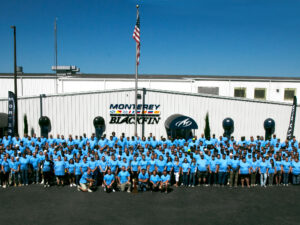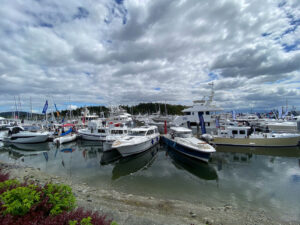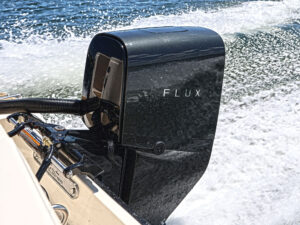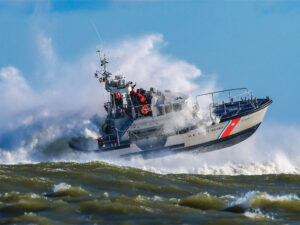If you considered diesels just five years ago, you would have been more likely to avoid one — especially on smaller boats. Many clattered, roared, smoked, stank, cost too much and weighed too much. But today makers mate commonrail fuel delivery and electronically timed fuel injectors with turbocharging and even hybrid technology to quiet engines and reduce emissions.
Now, many diesels are so quiet, smokeless, smooth and quick that it is no longer as easy to identify one without lifting the engine hatch. Couple this with dramatically improved fuel economy and an operating life three to five times longer than gas, and they have become quite desirable — at least for boats in the larger sizes. For runabouts, builders agree, fuel economy and longevity aren’t likely to pay off, even for kids who inherit them.
But then there are emissions reductions.
“Diesels are clean enough now they are at a point where it’s clean air coming out of the pipe. They are amazingly clean,” said Kent Lundgren, vice president of new business development for Volvo Penta. In fact, all diesel builders have achieved dramatic reductions in emissions and particulate matter and have more things on the drawing board, such as particulate filters and catalyst processes, to diminish pollutants even more.
Computer wizardry helps make engines quieter, cleaner and more efficient. Electronic controls inject multiple “puffs” of fuel into the cylinder to get the most out of the combustion moment. Only Steyr Motors has accomplished this with a mechanical injector rather than electronics.
Though the higher cost blocks many boaters from enjoying these advantages, the cost-benefit gap is closing, according to some makers, such as Yanmar.
“Ten years ago, the upcharge for diesel was double,” said Greg Eck, special projects manager for Yanmar Marine, “but if you look at our new smaller diesel built to replace a bigblock Chevy engine (Yanmar 6LP2, 315 hp), you can go diesel for about 25 percent more than a gas engine. At that price, if you use your boat 100 hours a year, it will pay back.”
“It takes more engineering to stand up to compression ratios of 17.5 [or] 18.5 to 1 when a gas engine typically only achieves 7.5 [or] 8.5 to 1,” said Rich Alley, general manager of Steyr Motors of North America. Steyr recently introduced a hybrid diesel motor that operates on batteries at idle or boosts the diesel power on acceleration.
How do you justify the cost? Longevity is one way. The huge compression ratios mean the engine works harder in one way but it generates impressive torque at much lower rpm, reducing engine wear overall.
“Gas engine life is about 2,000 hours. Diesels can live 5,000 to 10,000 — the number goes up the more you use them,” Eck said.
Most brands show a 50 percent upcharge per each, but in all cases there are strong reasons for it — one of which is many boats operate comparably well on fewer diesel horsepower, offering cost savings.
Another green benefit comes from fuel dynamics and improvement in mileage.
“Diesel is more dense and has more energy per pound than gasoline, and the diesel combustion is also about 50 percent more efficient,” Eck said.
Because diesel is easier to refine and more can be drawn from a barrel of crude for less energy, there’s an additional “green” impact.
Bottom line is that, if today’s diesels can improve mileage, reduce emissions, extend the life of boats and stretch the world’s oil reserves at today’s costs, they’ve become a responsible choice we can’t afford to ignore.
Talking Points
• Diesel is denser than gasoline, giving more energy per pound.
• Diesel is easier to refine from crude, giving more net pounds per barrel.
• Diesel engines can be up to 50% more efficient than gasoline engines.
• New technologies have made many diesels virtually smoke-free.
• There are more environment improvements on the horizon.








